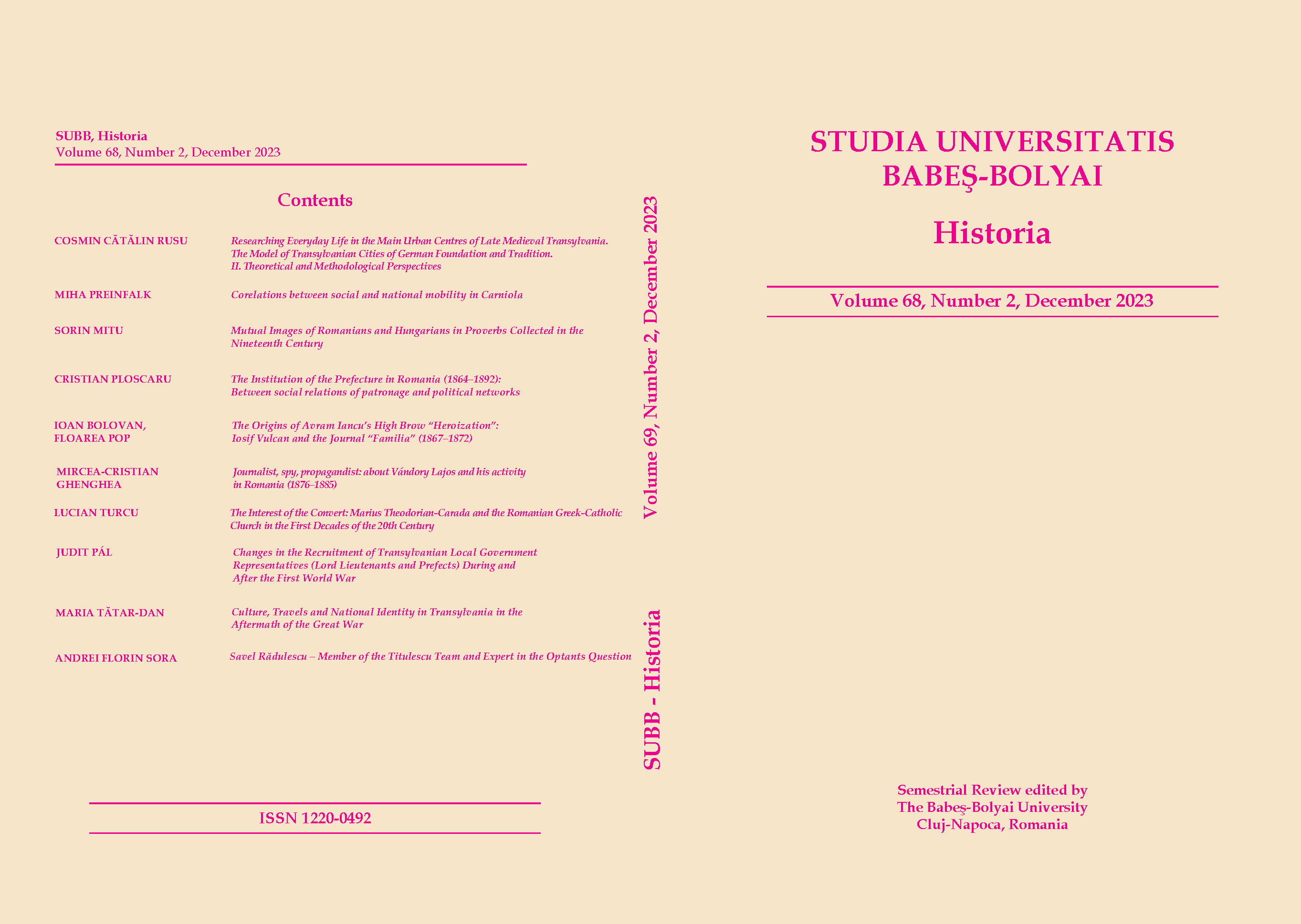MUTUAL IMAGES OF ROMANIANS AND HUNGARIANS IN PROVERBS COLLECTED IN THE NINETEENTH CENTURY
MUTUAL IMAGES OF ROMANIANS AND HUNGARIANS IN PROVERBS COLLECTED IN THE NINETEENTH CENTURY
Author(s): Sorin MituSubject(s): History, Ethnohistory, 19th Century
Published by: Studia Universitatis Babes-Bolyai
Keywords: Romanians; Hungarians; proverbs; nineteenth century; historical imagology;
Summary/Abstract: This article analyzes Romanian and Hungarian proverbs collected in the nineteenth century that convey images of the Other. These were published mostly in the masive collections of proverbs, sayings, and riddles edited by András Dugonics, Ede Margalits, and Iuliu Zanne. Proverbs speak first of all about the differences between “us” and “them,” about the negative traits of those around us, by which we identify ourselves and which highlight our superiority and “normality” in relation to dangerous and peculiar strangers around us. Peasants did not reflect on their neighbours in order to outline an objective portrait of them, but to display and reinforce their own cultural features, setting themselves apart from the strangers surrounding them. For this reason, they usually mocked and did not praise the Other. Mockery and ridicule were much more common than positive assessments, regardless of whether the relations between the two communities were good or bad. In this general framework, the popular images of the two peasant communities were agreeable and conveyed a sense of closeness and familiarity rather than a high degree of otherness, as was the case with the imagological relationships maintained with the Gypsies or the Jews.
Journal: Studia Universitatis Babes-Bolyai - Historia
- Issue Year: 68/2023
- Issue No: 2
- Page Range: 57-73
- Page Count: 17
- Language: English

